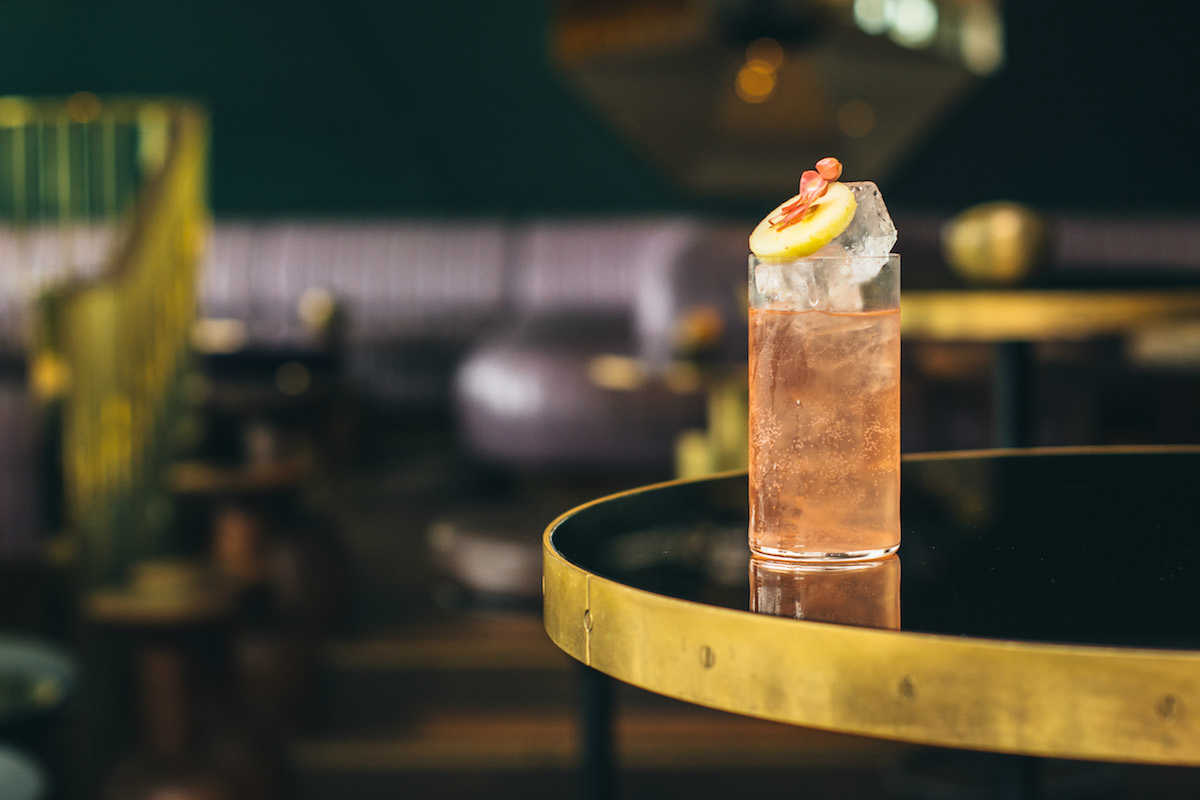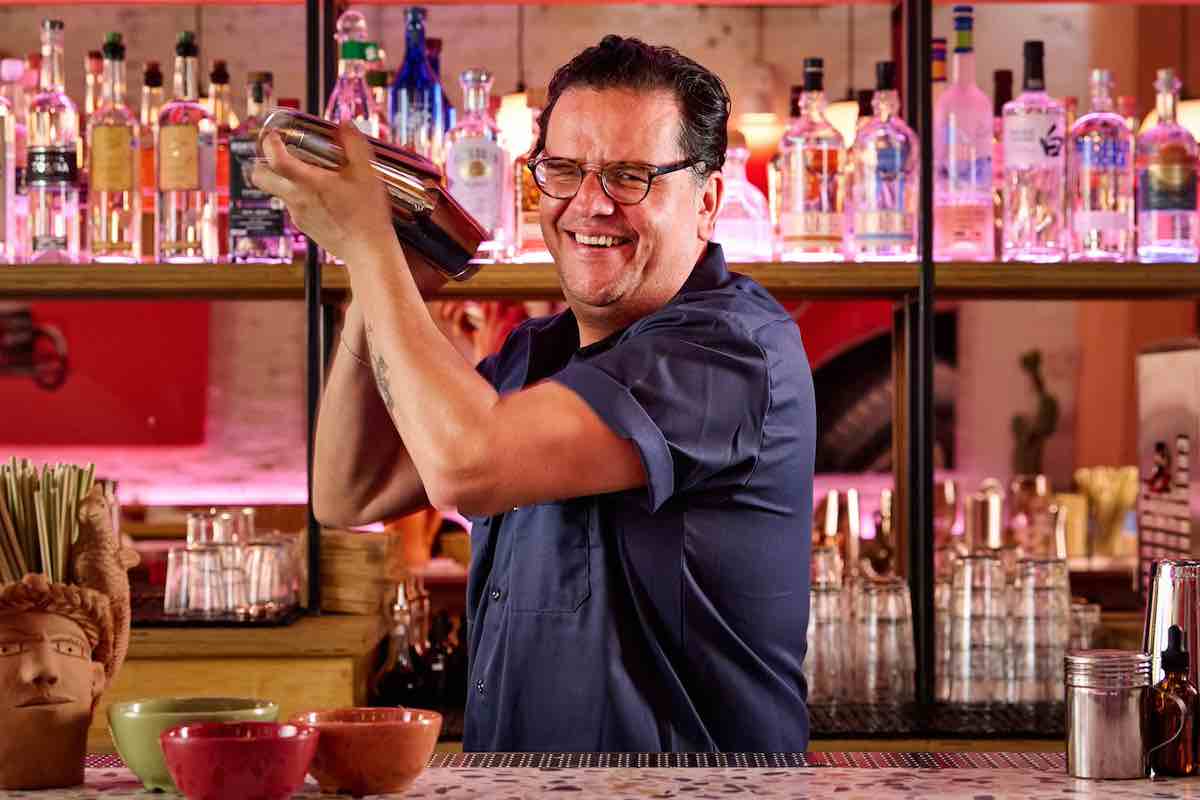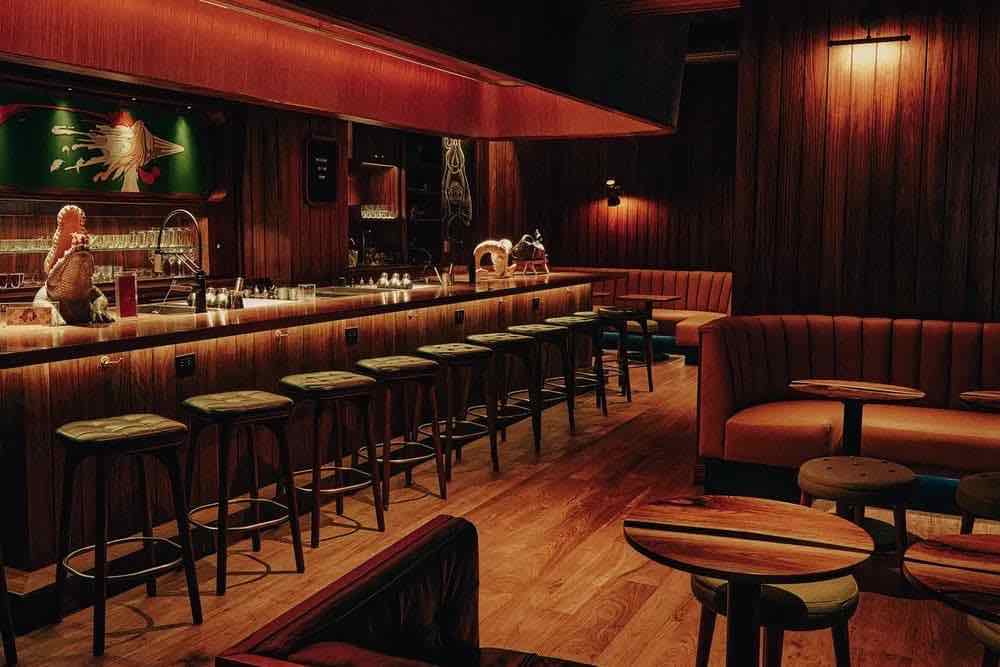Dandelyan opened in 2014 inside the Mondrian London. Since then, it’s been an awards magnet, winning World’s Best Cocktail Bar at the 2017 Tales of the Cocktail Spirited Awards, and World’s Best Cocktail Menu at the 2016 and 2018 Spirited Awards. Those are but three of many. The point is: people really like this bar. So, as a person, I figured it was time to check it out for myself.
I visited Dandelyan in late-May during a UK sojourn that included stops at other noteworthy bars across Scotland and England. The first thing you’ll notice: the Tom Dixon-designed Dandelyan is located on street level off the hotel’s lobby, which means that you’re just as likely to see savvy locals sipping intricate drinks as tourists hoisting Heinekens. But that doesn’t stop the bar from putting out one of the most ambitious cocktail menus around.
The Modern Life of Plants
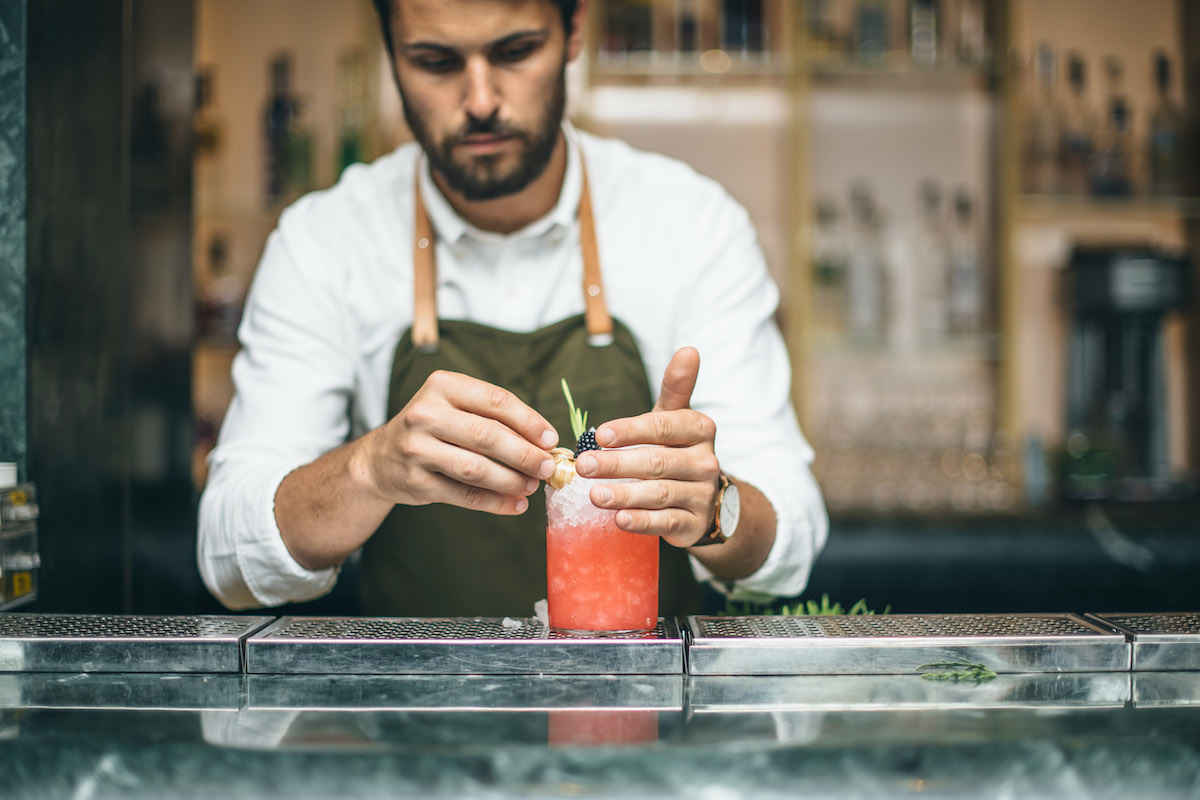
A Dandelyan barkeep puts the finishing touches on a cocktail.
That menu, dubbed “The Modern Life of Plants,” explores industrialization and large-scale food systems. The first chapter launched in March, and the second chapter, plus all the new drinks within, launched in July. The menu will be available for a year, so you’ve still got plenty of time to sample the goods. Uniquely, the menu concentrates on just three core ingredients—mint, grapes, and hops—that, thanks to industrialization, are available all year round. In doing this, the bar hopes to promote the positives of industrialization as a good example of waste management and a realistic view of the future of food. Why those three ingredients? Good question. I had the same one.
“We focused on these as they were universal,” says Dandelyan founder Ryan Chetiyawardana, aka Mr Lyan. “These were ingredients that featured heavily in bars around the world in one form or another, and were crops that have had to react to a growing demand.” He notes that the bar will stick to these three ingredients for the year while researching other plants that change the way we plant, grow, and manufacture. But don’t think this narrow focus means your choices are constrained. Rather, the menu is extensive, exploring all parts of mint, grapes, and hops from the roots and seeds to the leaves and flowers.
“The beauty of the format we’ve developed is that we can adapt elements throughout the year,” adds Chetiyawardana. “It was designed to nod to a botany plate where all the aspects of the plant are displayed, so you can map changes regardless of time of year.”
Gin With a Side of Industrialization
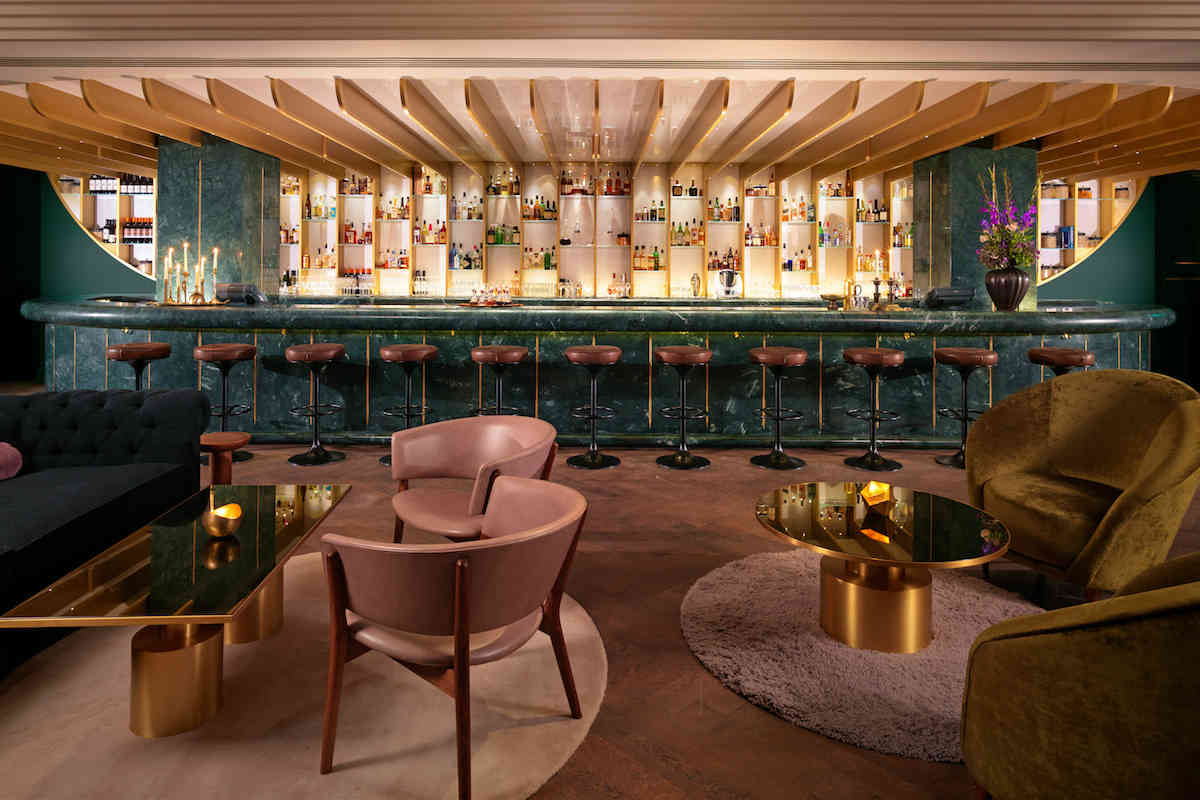
Inside Dandelyan at the Mondrian London
That covers the actual plants. Then there’s the industrialization side of things. Though large-scale food systems are often a scapegoat for today’s unhealthy eating, and a regular villain of the farm-to-table movement, the folks at Dandelyan recognize the other side of the coin. They see industrialization as an efficient means of reducing waste. “Previously [waste reduction] was motivated by cost saving exercises, but now people really want to make sure it has the least impact on the planet,” says Chetiyawardana. He adds that waste is a wasted opportunity, and that’s provided a lot of motivation for businesses, his included, to reconsider how they address products and ingredients.
“Sometimes it is simply inspiring people to consider their actions, and sometimes it is showcasing the care and fragility that goes into a product to inspire people to be cognizant of how they deal with whatever is left over.”
In practice behind the bar, this means using all parts of the featured plants, from root to flower, and also highlighting lesser known crop varieties. Take Black Mitcham peppermint, for example. It was prevalent in the UK more than 100 years ago, but disappeared until one man, Sir Michael Colman, reintroduced it to the English countryside in the 1990s. You can find this mint in the Brundall, a cocktail merging eight-year-old rum with bramble liqueur, apple, and ground ivy, another member of the mint family.
The Drinks
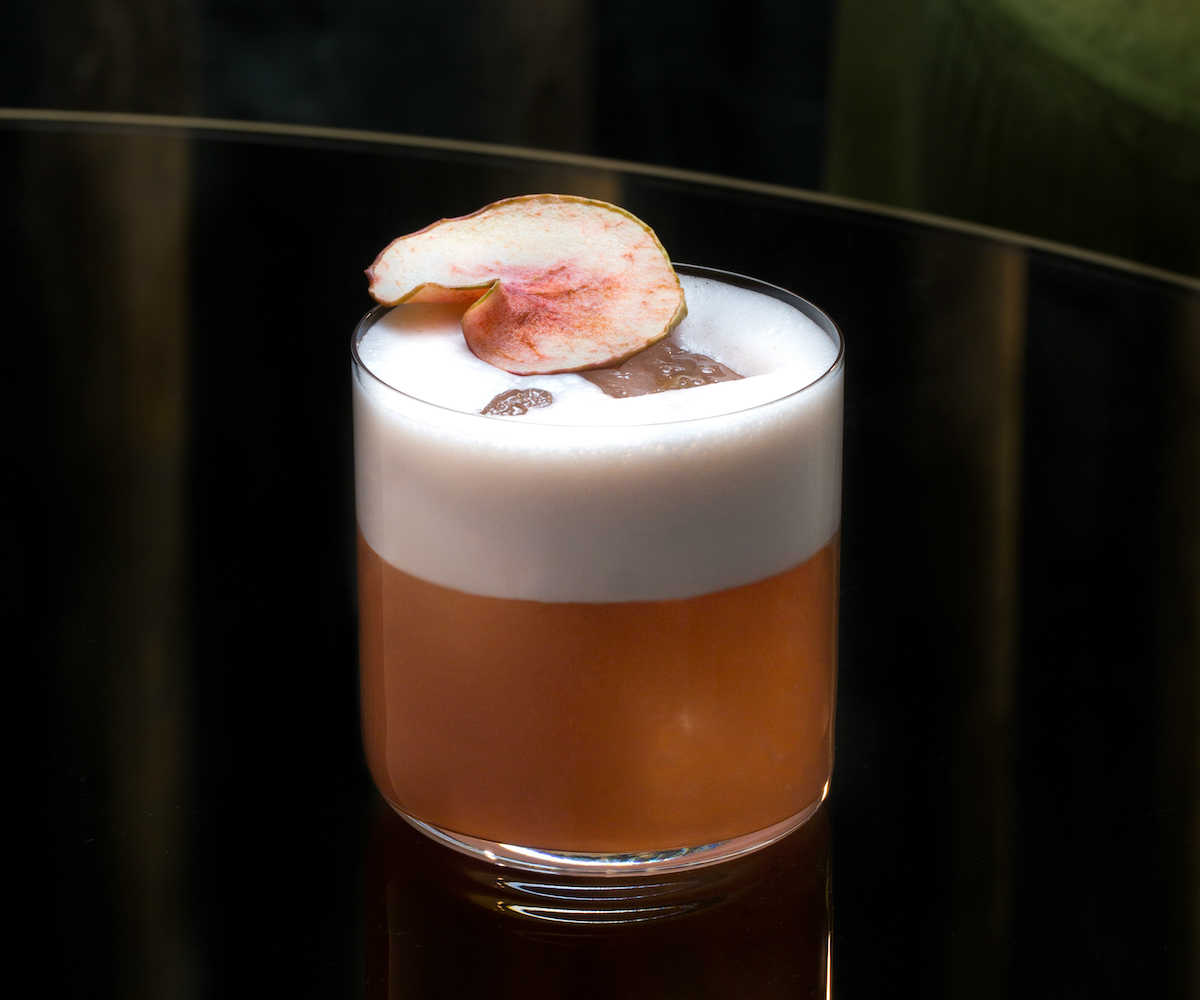
The Brundall cocktail at Dandelyan
The Modern Life of Plants menu is a commendable project, but none of it really matters—well, it matters less—if the drinks aren’t good. Fortunately, the drinks are great. I sampled the Titrate Manhattan (Tapatio Blanco Tequila, Talisker 10, rhubarb saison, lanolin, bitter and sweet herbs), the Standing Stones (Maker’s Mark, Martini Riserva Ambrato, bitter strawberry old vine wine, lemon, and honey), and the Laverstoke Park Spritz (Porter’s Gin, apple oleo, Asterley Bros. British Vermouth, celery, chenin blanc, and soda) from the plant-themed menu. I also tried a couple of other cocktails under the “classics” section of the menu, including the bee-centric BC3 Negroni, which combines Bombay Sapphire with bee pollen, vermouth, propolis, Ceylon Arrack, Campari, and aged honey.
Across the board, the cocktails were complex, but not just for complexity’s sake. They were gorgeously-presented, well-balanced, and managed to highlight the melange of ingredients within—no small achievement for a menu of such magnitude. The bar snacks—briny olives and roasted nuts—were also a nice touch, providing a little pre-dinner sustenance alongside the cocktails.
Sitting with a drink in hand and watching the world go by from a window-side perch in one of the world’s best bars is always a good way to pass the time. The fact that Dandelyan can get a curious drinker to do so while contemplating plant life and industrialization’s impact on our food systems… well, that’s just icing on the cake for the biology-trained Chetiyawardana.
